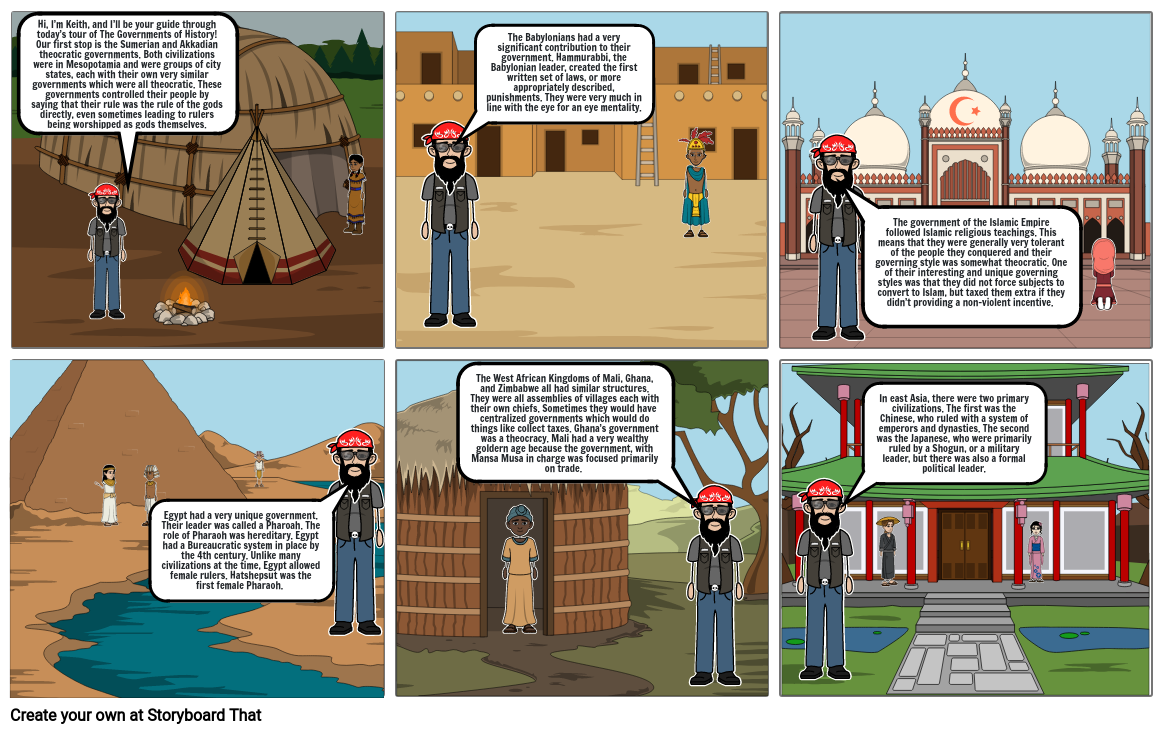Performance based assessment project

Storyboard Text
- Hi, I’m Keith, and I’ll be your guide through today’s tour of The Governments of History! Our first stop is the Sumerian and Akkadian theocratic governments. Both civilizations were in Mesopotamia and were groups of city states, each with their own very similar governments which were all theocratic. These governments controlled their people by saying that their rule was the rule of the gods directly, even sometimes leading to rulers being worshipped as gods themselves.
- The Babylonians had a very significant contribution to their government. Hammurabbi, the Babylonian leader, created the first written set of laws, or more appropriately described, punishments. They were very much in line with the eye for an eye mentality.
- The government of the Islamic Empire followed Islamic religious teachings. This means that they were generally very tolerant of the people they conquered and their governing style was somewhat theocratic. One of their interesting and unique governing styles was that they did not force subjects to convert to Islam, but taxed them extra if they didn’t providing a non-violent incentive.
- Egypt had a very unique government. Their leader was called a Pharoah. The role of Pharaoh was hereditary. Egypt had a Bureaucratic system in place by the 4th century. Unlike many civilizations at the time, Egypt allowed female rulers. Hatshepsut was the first female Pharaoh.
- The West African Kingdoms of Mali, Ghana, and Zimbabwe all had similar structures. They were all assemblies of villages each with their own chiefs. Sometimes they would have centralized governments which would do things like collect taxes. Ghana’s government was a theocracy. Mali had a very wealthy goldern age because the government, with Mansa Musa in charge was focused primarily on trade.
- In east Asia, there were two primary civilizations. The first was the Chinese, who ruled with a system of emperors and dynasties. The second was the Japanese, who were primarily ruled by a Shogun, or a military leader, but there was also a formal political leader.
Over 30 Million Storyboards Created

